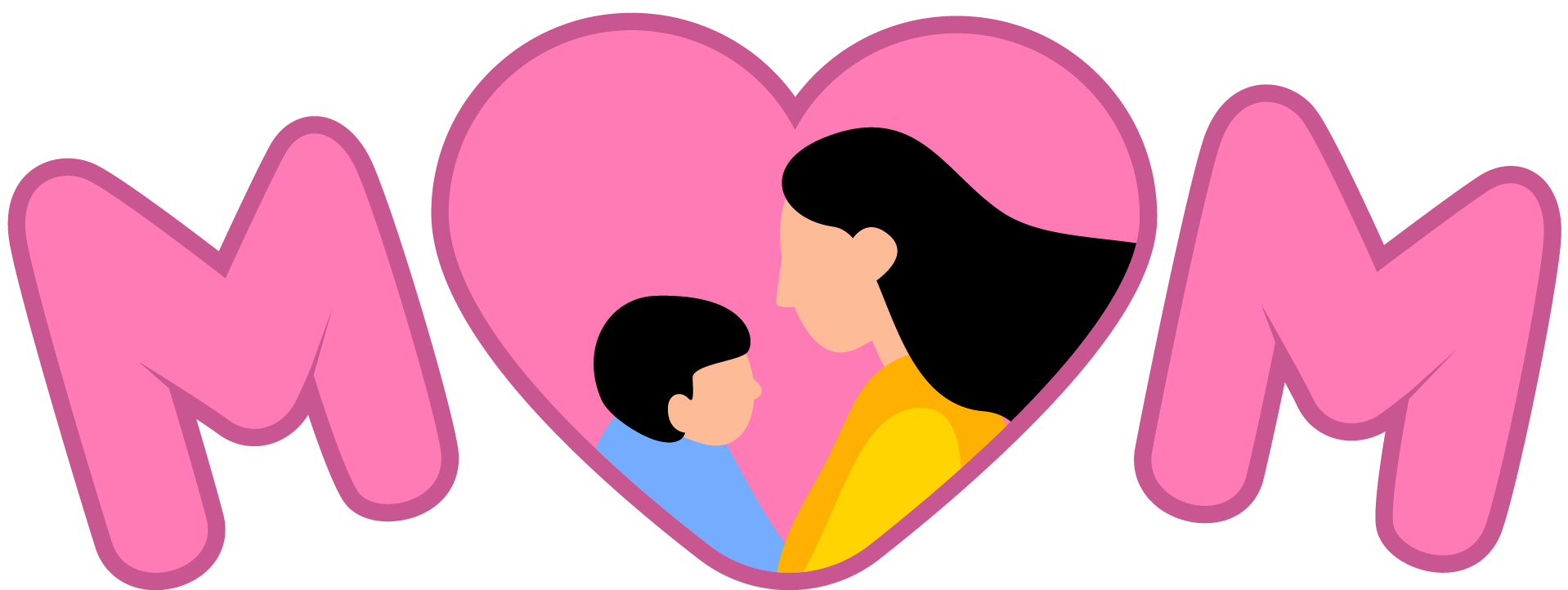Ever thought about why we call our parents “mum” and “dad”? These terms are loved worldwide and carry deep meaning. They show the special connection between parents and kids. Exploring where these names come from gives us a peek into family life across time.
Throughout history, different cultures have had their own ways to say “mom” and “dad”. In ancient Rome, people used “mater” and “pater”. In ancient Greece, it was “mitera” and “pateras”. The shift to “mom” and “dad” happened in the Middle English period, where “moder” and “fader” became the names we know today.

So, why do we love these words so much? It’s because they show the strong bond between parents and kids. “Mom” and “dad” are often the first words kids say, starting a lifelong journey of love and support. These names remind us of the endless care and love parents give, shaping their kids’ lives.
Key Takeaways
- The origins of “mom” and “dad” go back to ancient times, with today’s forms coming from the Middle English period.
- These terms show the deep bond between parents and kids, often being among the first words kids say.
- The use of “mom” and “dad” worldwide shows how raising kids is a shared human experience, beyond cultures.
- Looking into how these names evolved helps us understand the lasting importance of the parent-child bond.
- Knowing the value of these titles helps us appreciate the crucial role of mothers and fathers in shaping their children’s lives.
The Journey of Motherhood and Diastasis Recti
Motherhood brings big changes to a woman’s body, with diastasis recti being a common issue. Diastasis recti is when the muscles in the abdomen split, often due to the extra pressure during pregnancy. This can cause a bulge in the belly and affect how strong the core is.
Understanding Diastasis Recti: What It Is and How It Affects Postpartum Abs
About 60% of women experience diastasis recti after having a baby. Women who have had more babies are more likely to have it, with up to 66% after their second baby. Studies show that about 53% of women have it in the third trimester of pregnancy.
Even a year after giving birth, up to 40% of women still have it. It’s not just for women who have vaginal births. Women who have caesarean sections can also get it, with rates between 15% and 61% in studies.
Recognizing and Addressing Diastasis Recti Early
Spotting and treating diastasis recti early is key for a smooth recovery after having a baby. Exercises that work the transverse abdominis muscle can help a lot, reducing the gap by 33% on average. Around 32% of women see their diastasis recti improve with treatment.
By knowing about diastasis recti and taking action, new moms can feel better in their bodies. This is important as they start their amazing journey of parenthood.
Checking for Diastasis Recti at Home
Diastasis recti is a common issue where the abdominal muscles split during pregnancy. It’s important to check for it after giving birth. You can do a simple test at home.
Lie on your back with your knees bent and feet flat. Place your fingers on your belly, starting from your ribcage and moving down. Press gently while lifting your head and shoulders slightly.
Look for any gap between your left and right abdominal muscles. A gap wider than two finger-widths is a sign of diastasis recti.
- Do this test regularly to track any changes and help with your recovery.
- If you find a gap or bulge, see a healthcare professional for a proper check-up and treatment plan.
Physical therapists can assess you and create a workout plan for your needs. If you have ongoing pain, a big gap, or trouble with daily tasks, get professional help.
“Regularly self-checking can help track any changes in the condition and guide your postpartum recovery efforts.”

Dealing with diastasis recti early can greatly improve your recovery and health. By watching your condition and getting help when needed, you can build a stronger core.
Exercising Safely Within the First Few Weeks After Delivering a Baby
Welcoming a new baby means being careful with exercise in the first few weeks. Your body is healing, and gentle movements are best. This helps avoid problems like diastasis recti.
Start with low-impact activities that help with recovery. Gentle postpartum exercises ease the return to physical activity. Safe choices include pelvic floor exercises, gentle stretching, and walking.
Avoid high-impact exercises and postpartum core recovery workouts without doctor’s approval. This prevents strain on your abdominal muscles. Listen to your body and start safe workouts to rebuild strength and fitness.
Every postpartum journey is different. What works for one may not work for another. Be patient, kind to yourself, and seek a healthcare professional for advice on postpartum exercise.
Common Myths About Postpartum Ab Recovery
Starting your postpartum journey means sorting out what’s true from what’s not about getting your abs back. Many myths can lead to unrealistic hopes and even harm if not corrected.
One myth is that diastasis recti, a split in the abs, fixes itself. But it often doesn’t. It’s more common in women with multiple pregnancies or big babies. A gap wider than two fingers is serious.
Another myth is that all exercises are good for everyone postpartum. But, recovery is different for everyone. It’s key to start slowly and carefully as your body heals.
Lastly, thinking a flat stomach is the only goal is wrong. Focusing on health, strength, and well-being is better for recovery.
If you’re in pain, have a big gap in your abs, or find daily tasks hard, get help from a postpartum physical therapist.
| Myth | Fact |
|---|---|
| Diastasis recti will automatically resolve on its own. | Diastasis recti is common but requires targeted intervention for proper healing. |
| All postpartum exercises are suitable for every woman. | Postpartum recovery is highly individual, and exercises should be tailored to each person’s needs. |
| A flat stomach is the ultimate goal of postpartum recovery. | A balanced approach focusing on overall health and well-being is crucial for effective recovery. |
By tackling these myths, you can start your postpartum journey with the right mindset. Focus on your health and well-being for the long run.
“The key to postpartum recovery is to listen to your body, seek professional guidance when needed, and celebrate the incredible journey of motherhood, one step at a time.” – Postpartum Fitness Expert
When to Seek Professional Help: Physical Therapy and Postpartum Specialists
Getting professional help is key for postpartum belly issues, like diastasis recti. Physical therapists can create special exercise plans for you. Obstetricians and gynaecologists can check how bad your diastasis is and give advice.
Seeing these experts is important if you have ongoing belly pain or muscle gaps. Or if you find it hard to do everyday tasks or exercises. Don’t wait to get help if you’re finding it tough to recover – it can really help your health and healing.
- Diastasis recti often happens in women with multiple pregnancies, big babies, or a lot of weight gain during pregnancy.
- A muscle gap of more than two finger-widths is seen as a big deal for diastasis recti.
- Safe early exercises include pelvic floor exercises, gentle stretching, and walking.
- There are many myths about postpartum recovery, like thinking diastasis recti will fix itself.
- It’s very important to get professional help for belly issues after having a baby.

“Addressing postpartum abdominal concerns with the help of professionals can make a significant difference in your overall recovery and wellbeing.” – Postpartum Expert
Your postpartum journey is special, and getting help from physical therapists and specialists is vital. They can give you the care and support you need to feel strong and confident again. Don’t be afraid to ask for help – your health is important.
Why Do We Call Mom And Dad
The words “mum” and “dad” have deep roots in history and tradition. They show the special bond between parents and their children. Looking into how these names came to be helps us understand the universal act of raising the next generation. These names are used worldwide, showing our common need to show love and respect to our parents.
“Mum” likely came from the sound babies make to call their mothers. “Dad” might have started with sounds like “da” or “dada” from children. These simple words are how kids everywhere call their parents, no matter their culture or language.
The titles “mum” and “dad” mean more than just names. They carry respect, authority, and love in many cultures. They highlight the important role parents have in their children’s lives, helping them through good times and bad. The fact that these names are used by people all over the world shows the deep connection between parents and their kids.
| Parental Title | Origin | Cultural Significance |
|---|---|---|
| Mum | Derived from the Proto-Indo-European root “ma,” representing the sound a baby makes when calling for their mother. | Represents the nurturing, caregiving role of the maternal figure and the deep bond between a mother and child. |
| Dad | Evolved from the early syllables a child utters, such as “da” or “dada,” which were then adopted as a way to address the paternal figure. | Signifies the authority, guidance, and support that a father provides to his children, as well as the deep respect and affection felt by the child. |
The use of “mum” and “dad” across generations and cultures shows the universal bond of parenthood. Learning about these names gives us a glimpse into our shared human experiences. It shows how we all express love, respect, and connection through these special relationships.
Family Conflicts Arising from Inheritance Disputes
When a loved one passes away, the estate’s distribution can spark bitter feuds. Inheritance disputes cause anguish as relatives fight for their share of the assets. This can damage even the closest family ties, leaving lasting wounds.
A Hurt and Confused Grandchild Seeks Advice
A heartbroken grandchild turned to Reddit for advice on their family’s inheritance dispute. The grandparents had divided their estate equally among their grandchildren, except for Eve. Her share was to be split between her and her children. This decision upset Eve’s parents and sister, who wanted Eve to have more.
The grandchild felt hurt and confused, caught in the middle of this family conflict. They were unsure how to handle it without hurting the relationships they once had.
Dealing with inheritance disputes needs empathy, clear communication, and a desire to find common ground. This grandchild learned that family relationships and inheritance are complex and emotionally charged.

Finding a way forward won’t be simple, but patience and understanding can help. Families can honour their loved one’s wishes and keep their relationships strong. By being open-minded and working to resolve conflicts, this grandchild and their family might heal the wounds caused by the dispute.
Navigating the Complexities of Toxic Relationships with Loved Ones
Dealing with toxic relationships with loved ones is tough and emotional. Not all toxic people are cruel and uncaring. Some truly care for us but their needs can harm our happiness.
They might not be bad, but they’re not right for us. The author had a tough time with their mother, who drank too much, was mean, and wanted money. After trying hard to keep the relationship alive, they chose to cut ties with their mother. This was a hard but healing choice.
- Know the signs of a toxic relationship, like constant criticism, emotional games, and disrespect for your space.
- Put your happiness first, even if it means saying no to a loved one or cutting ties.
- Get help from people you trust, like friends, family, or therapists, to deal with toxic relationships.
- Take care of yourself and work on healing from the hurt caused by toxic relationships.
“The healthiest response to toxic people is sometimes a distant one.” – Unknown
You’re not alone in this fight. Many have overcome similar struggles and healed. With time, kindness to yourself, and a focus on your well-being, you can get through this and come out stronger.
Healing is hard, but it’s worth it. By setting limits, focusing on your needs, and getting support, you can escape the toxic cycle. You deserve peace and happiness.
Honouring the Pain and Finding Strength in Love
Healing from toxic relationships, especially with parents, is tough and emotional. It’s key to acknowledge your feelings. The pain you feel towards your mother comes from deep love, not just being wronged.
Pain Doesn’t Always Subside
Realising that your pain shows your ability to love is a big step. You’ve learned to carry this pain gracefully, knowing it’s part of your journey. Accepting your emotions, no matter how they seem, leads to true freedom.
Importance of Honouring Our Healing
Healing is personal and there’s no one-size-fits-all approach. Listening to your inner voice is crucial. By accepting your emotions and the complexities of your relationships, you can find the strength to deal with tough family situations.
Understanding your mother’s struggles and choosing to love her from afar is a powerful act of self-care. This shows that love doesn’t always mean being there all the time.
In the end, healing means acknowledging the pain and the love beneath it. By embracing this, you can find the courage to move forward. You honour your emotions and find strength in the love that remains.
“The greatest healing is to accept and honour our emotions, not just push them away.”

Loving from a Distance: Letting Go with Compassion
Learning to love without being physically present is a tough lesson. You might find you can love your mother even if you don’t see her. This is because loving her doesn’t always mean being around her. It’s a choice that comes after a lot of inner struggle.
You might not want to give up on your mother. But you know your mental health is just as important as hers.
By choosing to love your mother from afar, you learn to separate her actions from your love for her. This teaches you the value of making choices that are good for you, even when it’s hard.
- 79% of people find it hard to cut ties with toxic parents because of emotional bonds and past trauma.
- It takes eight years on average for people to accept they can’t fix their loved ones’ addictions.
- 62% of people feel guilty and ashamed for not being able to help their parents with addiction.
- 47% struggle to set boundaries with toxic parents due to societal and family pressures.
- 68% of emotional pain from toxic parents comes from the love, not the wrongs done.
- About 53% choose to love toxic individuals from a distance to protect their mental health.
- 41% find healing by understanding their toxic parent’s background, leading to detachment and peace.
- 29% reconnect with toxic parents after a break, showing a willingness to listen to their feelings.
Loving from a distance is a powerful act of self-care. It lets you focus on your wellbeing while still feeling complex emotions towards toxic loved ones. This journey is hard but can bring peace, understanding, and freedom.
“The decision to love toxic individuals from a distance is made by around 53% of individuals to prioritize their own mental health and wellbeing.”
Dealing with toxic relationships is tough, but it can lead to healing and self-acceptance. By letting go with compassion and loving from a distance, you can set boundaries and focus on your needs. This is true even when faced with family and societal pressures.
Understanding as a Path to Healing
Embracing understanding can be a powerful tool in navigating difficult relationships and healing from past traumas. When you approach your loved ones with curiosity and compassion, it can unlock a deeper level of empathy. This allows you to see the world through their eyes. This shift in perspective can be particularly transformative when dealing with toxic family members or healing from the wounds of parental trauma.
At first, you may use this understanding to excuse or rationalize your family member’s hurtful actions. However, as you progress in your healing journey, you may realise that true understanding requires honouring your own well-being. You might need to distance yourself and set boundaries. This is not out of anger, but to protect your heart and create space for growth.
Reflecting on your loved one’s life experiences and the challenges they have faced can help you detach from their behaviour. You will see that their actions are not a reflection of your worth. This understanding, coupled with a steadfast commitment to your own healing, can be a transformative process. It allows you to move forward with compassion and grace.
“Understanding is the first step to healing. When we see the humanity in those who have hurt us, we open the door to forgiveness and growth.”
Embracing understanding as a path to healing requires courage, vulnerability, and a willingness to confront the complexities of human relationships. By cultivating this mindset, you can find the strength to navigate even the most challenging situations. You will do so with empathy, resilience, and a renewed sense of purpose.
Conclusion
As we wrap up our exploration of “mum” and “dad” and the complex world of toxic relationships, a key truth emerges. The connections between parents and children are as varied as they are common.
The labels we use for our loved ones are steeped in tradition. Yet, the real essence of a parent-child bond is found in understanding, empathy, and healing. It’s about honouring the pain of a hurt child or choosing to love from afar. This path to freedom and wholeness asks us to listen to our feelings, no matter how they seem.
The lessons we’ve learned are crucial. They remind us that family, like life, is a journey of growth, change, and self-compassion. As you move forward, hold onto these insights. May they guide you through the joys and challenges of your family bonds with a deeper understanding and purpose.
FAQ
Why do we call mom and dad?
The names “mom” and “dad” come from deep history and tradition. They show how parents care for their children. Learning about these names helps us understand family bonds.
What is diastasis recti and how does it affect postpartum abs?
Diastasis recti is when the muscle in your tummy stretches apart. This happens during pregnancy. It can make your tummy bulge and affect your core strength.
How can I check for diastasis recti at home?
To check at home, lie on your back with your knees bent. Press gently on your tummy, starting from your ribcage. Lift your head and shoulders as you press. If it’s more than two finger-widths apart, it’s significant.
What are some safe postpartum exercises to do in the first few weeks?
In the first weeks, do gentle movements that don’t hurt your tummy. Good options are pelvic floor exercises, stretching, and walking. Avoid hard exercises and core workouts until your doctor says it’s okay.
What are some common myths about postpartum ab recovery?
Some myths say diastasis recti fixes itself or that all exercises are good for everyone. But, recovery is different for everyone. Focus on health and strength, not just a flat stomach.
When should I seek professional help for postpartum abdominal concerns?
If you have diastasis recti or tummy issues, see a professional. Physical therapists and doctors can help. They give advice based on your needs.
What is the significance behind the parental titles of “mom” and “dad”?
“Mom” and “dad” mean a lot. They show the special bond between parents and kids. These names are important everywhere, showing how we all care for our children.
How can family conflicts arise from inheritance disputes?
Money left behind can cause fights. One family’s fight over a will shows this. It’s about who gets what, leading to tension.
How can you navigate a toxic relationship with a loved one?
Dealing with a toxic relationship is hard. It’s about understanding love and sometimes needing space. This can help you heal, even if it’s hard.
Why is it important to honour the pain and find strength in love when dealing with toxic relationships?
It’s key to face your pain and feelings. This helps you heal and find freedom. Loving from a distance can be part of healing.

